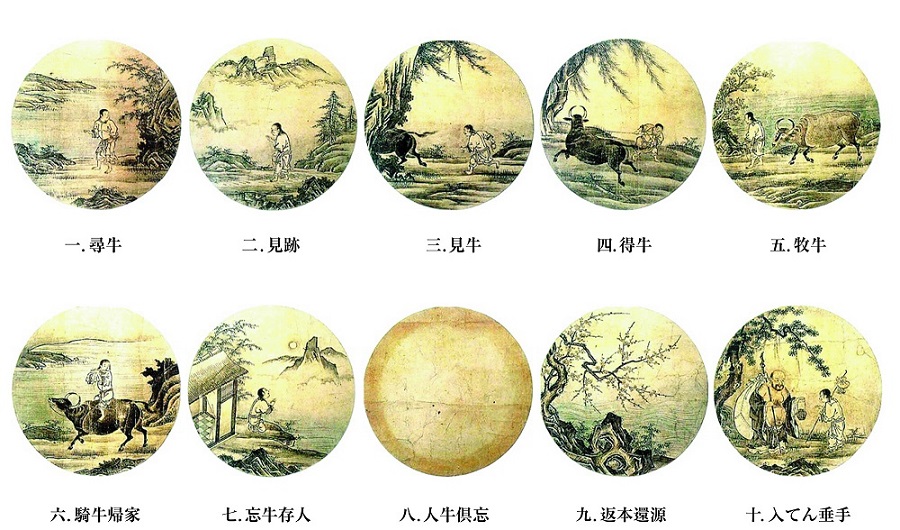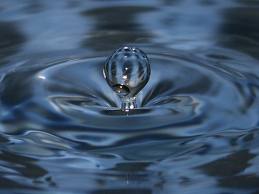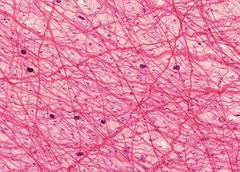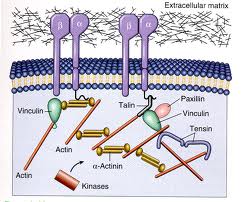|
The Living Matrix: Water, the Fluid Systems, and the Collagen Matrix Our bodies are 70 % water, one of the most extraordinary molecular structures in the universe. Water flows, and thus acts as a transport system, like a river. Water dissolves, can absorb, and thus acts as a storage system. Water is not compressible, and thus can act as a strengthening, stabilizing system. Water has no gross form; it takes on the shape of its container, and thus allows flexibity and adaptability. Very recently, new discoveries are showing how some complex structures of water molecules with unique properties interact with the structural protein collagen to give the Living Matrix exceptional properties of communication. Where in the body is all of this water and how does it move? Through the digestive systems we absorb water and through the excretory systems we excrete water. The circulatory system, including the heart, arterial and venous blood vessels and the lymphatic vessels is specifically designed to move water through all areas of the body. There is water inside the cells as well as water outside the cells and outside the circulatory vessels. It is this last area of water that fascinates us in yoga as movement creates soaking and squeezing effects that keep the extracellular fluids dynamic and the tissues healthy. What is healthy tissue? Healthy tissue has the proper balance of structure and flow. Dry tissue has no means to facilitate the movement of nutrients into and waste products away from the cells. A lack of sufficient hydration leads to a tight, brittle structure that is vulnerable to injury and disease Edemic tissue, with water that pools and does not flow, also does not allow the cells to receive nutrition and information and discharge excess material. Here the stucture becomes weak and distended and again vulnerable to injury and disease. Only a dynamic state of fluid flow allows a proper balance of nutrients, ions and other necessary chemicals to flow towards the cells and the waste products to be transported away. Here the connective tissue structures are elastic, mutable, vibrant, adaptable, and fully alive. When this healthy tissue is extended throughout the entire body, the fluid/connective tissue continuum emerges as an intelligent organ of communication known as the ‘Living Matrix’. The Living Matrix As yogis, the story of integration is fundamental. The definition of yoga includes both the knowing of our innate integration as wholeness and also the practices and disciplines that assist our manifesting this knowing in our daily actions. We will also cover this from Patanjali’s perspective in our Yoga Sutras section and from the point of view of neuroscience. Integration is a fundamental expression of life and in the human body, this is integration is expressed in the structure and functioning of three interwoven systems, the nervous system, the circulatory or fluid system, and the fascial system. All three extend into every tissue and organ of the body and each, if isolated from the body, would reveal the full 3 dimensional stucture of the body. If we look more deeply into the actual functioning of the body, we find a single integrative system, the living tissue matrix, as the ultimate source of systemic cooperation. Visionary scientist Jim Oschman, author of “Energy Medicine: The Scientific Basis” and “Energy Medicine in Therapeutics and Human Performance”, is the most eloquent and articulate spokesman for the Living Matrix and this first quote is taken from a slide show presentation he gave at the first international conference on fascia held in Boston in the fall of 2007. “The “Living Matrix” is the continuous molecular fabric of the organism consisting of fascia and other connective tissues, the extracellular matricies, integrins, cytoskeletons, nuclear matricies and genetic material. For more than half a century evidence has accumulated showing that the living matrix, and its associated water network, constitute a body wide communication system delivering energy and information to all parts. Energy and information are conducted extremely rapidly throughout the matrix via electrons, protons, solitons*, excitons*, and a variety of other subatomic species, as well as by electromagnetic resonance phenomena.” (*In mathematics and physics, a soliton is a self-reinforcing solitary wave (a wave packet or pulse) that maintains its shape while it travels at constant speed. An exciton is a bound state of an electron and an imaginary particle called an electron hole, in an insulator or semiconductor, and such is a Coulomb-correlated electron-hole pair. It is an elementary excitation, or a quasiparticle of a solid. (Wikipedia) Jim went on to describe the revolutionary shift in cell biology needed to keep up with the revelations arising from the living matrix studies. “The organism and the cells within are better described in terms of solid state biochemistry, as electronic circuits, rather than water and electrolyte filled water balloons with molecules diffusing from place to place.” Most cellular processes proceed much too rapidly to be accounted for by the traditional mechanical “water balloon/particle diffusion model. Many large scale movements occur much too rapidly to be accounted for by the firing of the nervous system. Solid state biology, using electron flow, like in solid state electronics discovered in the propeties of the silicon chip, offers a model that can produce energy/information exchanges at speeds far greater than older biological models. The primary carrier of this electron flow is a substance near and dear to body workers and yoga students alike: the connective tissue protein known as collagen. “The connective tissue is the most abundant component of animal matter and forms the bulk of the animal body. The overall form of the body, as well as the architecture and mechanical and functional properties of all of its parts, are largely determined by the local configuration and properties of the connective tissue. All of the so-called great systems of the body – circulation, nervous system, musculo-skeletal system, digestive track, the various organs – are ensheathed in and partitioned by connective tissue. The connective tissue forms a continuously interconnected system throughout the living body. All movements, of the body as a whole, and of its smallest parts, are created by tensions carried through the connective tissue fabric. It is a liquid crystalline material and its components are semi-conductors, properties that give rise to many remarkable properties. One of the semi-conductor properties of connective tissue is piezoelectricity, from the Greek, meaning “pressure electricity”. Because of piezoelectricity, every movement of the body, every pressure and every tension anywhere, generates a variety of oscillating bioelectric signals or microcurrents and other kinds of signals that will be described later. These signals are precisely characteristic of those tensions, compressions and movements. Because of the continuity and conductivity of the connective tissue, these signals spread through the tissues. Because of continuity with cell interiors, to be described next, these microcurrents also are conducted into the cells. If the parts of the organism are cooperative and coordinated in their functioning and every cell knows what every other cell is doing, it is due to the continuity and signaling properties of the connective tissue.” From “Energy Medicine in Therapeutics and Human Performance” The discovery of the connection of the extracellular matrix with the interior of the cell is one of the major breakthroughs in modern biology. It has lead to the recognition that the architecture of the cell plays a fundamental role in the unfolding of biochemical processes. Each cell has its own arcitechtural support system called the cytoskeleton. Using the analogy to the larger body, a cell’s ‘bones’ are called microtubules, the ‘tendons’ are called microtrabeculae, and the ‘muscles’ of the cell are called microfilaments, which are actually composed of actin and myosin, key muscle proteins. Each cell has its own inner matrix. Recently, a whole new category of molecules called integrins Extra Cellular Matrix The extracellular matrix (ECM) is a complex structural entity surrounding and supporting cells that are found within mammalian tissues. The ECM is often referred to as the connective tissue. The ECM is composed of 3 major classes of biomolecules:
Collagen, the Molecule of Integration Our old vision of life was that creatures were collections of water balloon like cells, many different from each other, but most bound together like pieces in a jigsaw puzzle. Now we know that this living matrix plays a crucial role in life and the term ‘connective tissue’ has taken on an far more complex meaning. The protein collagen is the essential component this cellular scaffolding, like the mesh in a screen. Cells fill the holes in the mesh. Life is an amazing dance of complex molecules. Polymers, a major category of organic molecules, are long chains composed of a spine and and a sequence of units (monomers) that are added over and over. Nature’s most abundant protein polymer is collagen. Current science has so far found 13 kinds of vertebrate collagen, plus some smaller “collegen like” molecules. Each type has evolved to serve a distinct purpose, varying according to the anatomical region including muscles, bones, and cartilage as well as blood vessels, nerves and various parts of the skin, which itself is the largest organ in the body. The differences among these collagen variants come at the ends of each collagen molecule. It’s as though Nature created specified arms able to share their fingertips with the tips of different molecules in appropriate cells. That’s how they connect. But all collagen middles are the same. Nature accomplished this purpose superbly which is why no other enzyme (of the many thousands in the body) but a “collagenase” can break it into its component parts. Ground Substance: Fluid Integration This collagen based extracellular matrix has a fluid component know as the ground substance. Composed of water and various ions and other large molecules, the ground substance has primarily a gel-like quality. It is through the medium of the GS that the nutrients and oxygen carried by the blood stream can diffuse into the cells and the cellular waste products can be carried back to the various lymphatic vessels, veins and sweat glands to be filtered and passed out of the body. What makes this ground substance so fascinating involves the new scientific revelations about ‘weird and wondeful ‘water’. (Mae-Wan Ho 2008) Masaru Emoto (2004) has spent a life time studying water. One of the many observations he makes is very relevant to us yogis. ” The first acupuncture point on the kidney meridian on the bottom of the feet is called “Bubbling Spring.” It is a major point for energy input. When we walk, this part of the foot acts as a pump and encourages the waters of the body to move. To encourage movement we can walk, run or do whatever activity we enjoy. Figure eights will spiral the body’s waters into motion and energize them.”
|
Recent Posts
The Ten Oxherding Pictures
A Holiday Gift from the Buddhist World to all of us.
The ten Oxherding Pictures from Zen Buddhism represent the stages and path to awakening, integration and enlightenment, with the Ox representing our True Nature and the Oxherder each of us, the embodied being. It is important to note that the stages are not linear but spiralic and multi-dimensional, as we usually can get glimpses of more advanced levels before we have truly completed and integrated the any or all of the previous ones.
Also, we may often be working with several stages at the same time. More subtle awakenings in one level may trigger unconscious and unresolved traumas stored in the earlier levels that then need to be revisited, transformed and integrated. Then, the energy held in trauma is resolved and free to use for deeper growth.
There are many variations on the ten pictures representing the stages, and these are usually accompanied by poetic verses and/or commentary describing the journey. The paintings seen below are traditionally attributed to 天章周文 Tenshō Shūbun (1414-1463), of the Muromachi period in the late fifteenth century and are found at the Shōkokuji temple in Kyoto, Japan.
These stages can be seen as three sets of three transformations, with the final stage standing alone. The first three are the beginners journey, the second three those of the intermediate student, and the final three the most subtle and refined. The tenth transcends all and resolves as the awakened Buddha in the world helping others. Looking more deeply and ironically, we find that ultimately it is the Ox who is training and leading the Oxherder

1: Seeking the Ox
We know something is missing in our lives, but don’t know what it might be, or where to look. Our souls ache, our spirit feels fragile. The spiritual journey begins, but our minds are full of confusion and delusion. Our search is random and we cannot find the Ox anywhere. This is Dante at the beginning of The Divine Comedy.
2: Seeing Tracks of the Ox
Through study and guidance we begin to get glimpses. Maybe we discover yoga or meditation, or find spiritual teachers or writings that inspire us. But although we see the tracks, the Ox is still unseen, unknown. The tracks give us some confidence and we continue seeking, driven by the awakening cosmic impulse to discover/uncover the fullness and truth of our Being. The Ox is calling us.
3: First Glimpsing the Ox
There is the Ox. Wow! So magnificent! How did we ever not see! But the Ox remains elusive, disappearing into the forest. How could that be? Our minds are still confused, our seeking still undisciplined. The Ox teases us. She is everywhere and then nowhere to be found. Our mental habits and beliefs still dominate in spite of the revelation and we struggle to find ground. We are still beginners on the journey.
4: Catching the Ox
We finally catch the ox and grasp the rope to hold her, but she is wild and free, used to cavorting in the fields. We must hold the rope firmly and steadily. The rope of course is our evolving meditation practice and this is where it gets more serious. We are no longer beginners. We are in the realm of un-abiding awakening and must be ‘all in’ with our practice to stabilize the ground. Habits and conditioning have many tentacles extending into the unconscious, so our discipline must become stronger. The Ox keeps us on our toes.
5: Taming the Ox
As our practice becomes stronger, we can hold the rope more loosely as the Ox is relaxing somewhat. It is actually the mind that is relaxing as we begin to realize that the Ox is always steady and it is our minds that are wild and untamed. By relaxing our efforts, our practices can now include resting in the infinite and we become more comfortable in stillness and mystery. Habits still arise as the unconscious has many layers and levels of confusion and trauma, but we recognize the reality that our thoughts arise and fall from the depths of silence and that our delusion is self created.
6: Riding the Ox Back Home
The seeking and struggle come to an end and we can let go of the rope as Ox and herder are one, moving effortlessly together though the world. Buddha Nature is awake and free and we feel spontaneous joy and happiness. The Oxherder plays his flute for the birds and children of the village. This joy and delight can be a surprise as the practice has seemed quite serious at times. Unseen unconscious traumas may still exist so vigilance is still required.
7: Ox Forgotten, Self Alone
The Ox is now gone and the Oxherder sits at home alone. This is ‘Self as ‘I am’ without the need to ‘be something. This is Kaivalya of the Yoga Sutras, Purusha distinct from Prakriti. Up until now, there has remained a subtle sense of duality, of practice and life, of spiritual and not spiritual. This now dissolves. There is no longer ‘something to do’. Everything is meditation and nothing is special. Things are ‘just as they are’.
8: Ox and Self Both Forgotten
Total Emptiness. No concepts, ideas or beliefs, no sense of separateness. Even the “I am” is gone. All gone. Not even the scent of ‘holiness’ or special-ness remains. Gate, Gate, Paragate, Parasamgate.
9: Return to the Source
From the realization of Emptiness emerges the realization that the amazing flow of life always continues on in its own perfection. Seasons come and go. Cherry trees bloom in the spring. Birds sing and the rivers flow. Stars are born and others explode into cosmic dust. Emptiness is Fullness, Fullness is Emptiness. Bodhi svaha!
10: Returning to the Marketplace with Helping Hands
The enlightened being joyfully joins the world to aid all beings on their journey. Freedom, wisdom and compassion are the roots of action. Enlightenment is not passive but celebratory and engaged.
Here are some other perspectives:
From Tricycle Magazine
https://terebess.hu/english/Kuoan1.html
https://terebess.hu/english/oxherd0.html
- MU Comments Off on MU
- Comments Off on






